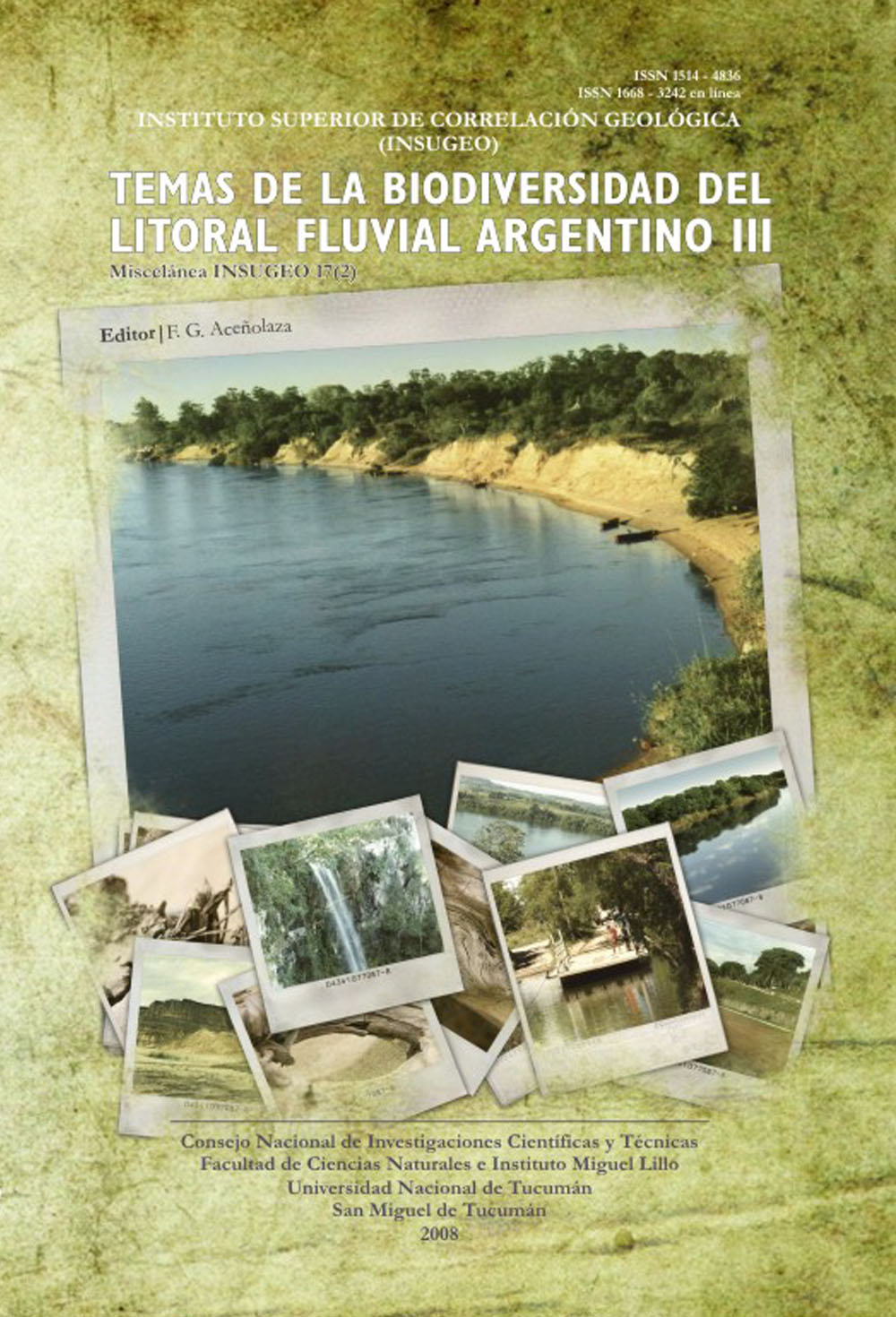Miscelánea 17 (2)
Reseña paleobiogeográfica de los Xenarthra (Mammalia) del Pleistoceno tardío de la región Mesopotámica (Argentina)
Alfredo A. Carlini | A. E. Zurita | Ángel R. Miño Boilini
Descargar trabajo en formato PDFResumen
RESEÑA PALEOBIOGEOGRÁFICA DE LOS XENARTHRA (MAMMALIA) DEL PLEISTOCENO TARDÍO DE LA REGIÓN MESOPOTÁMICA (ARGENTINA).- Estudios paleontológicos efectuados en la región Mesopotámica, basados particularmente en la fauna de mamíferos del Pleistoceno tardío-Holoceno temprano (ca. 130-8 ka), muestran algunas diferencias paleofaunísticas y biogeográficas con respecto a la región Pampeana y Centro-norte de Argentina, al tiempo que manifiestan cierta vinculación con el sur de Brasil y oeste de Uruguay. En este contexto, se llevó a cabo un estudio comparativo de los Xenarthra (Mammalia) del Pleistoceno tardío de la región Mesopotámica de Argentina. En líneas generales, los Xenarthra se encuentran bien representados, con taxones de origen “pampeano” y otros de afinidades “brasílicas”. También son destacables ciertos casos de probables endemismos en los Cingulata (Glyptodontidae) y en los Tardigrada (Scelidotheriinae y Mylodontinae). En este contexto, dos de los Xenarthra de mayor frecuencia de regiAstro en la región Pampeana (Megatherium Cuvier y Neosclerocalyptus Paula Couto) están prácticamente ausentes en las unidades portadores de la Mesopotamia. Por último, del elenco pleistoceno de Glyptodontidae propio de la región Pampeana y con registros más frecuentes, aquí sólo se destacan los géneros Panochthus Burmeister y Glyptodon Owen, también comunes en el sur de Brasil y oeste de Uruguay. En síntesis, los Xenarthra demuestran ser un buen elemento para apoyar la hipótesis de una diferenciación paleofaunística y biogeográfica de esta área durante, por lo menos, el Cuaternario tardío. A su vez, la aparente mezcla de taxones de origen “austral” con otros intertropicales puede ser explicada en función de procesos migratorios de expansión y retracción de la biota estimulados por las frecuentes fluctuaciones climático-ambientales del Pleistoceno.
Abstract
PALAEOBIOGEOGRAPHIC REVIEW OF THE XENARTHRA (MAMMALIA) FROM THE LATE PLEISTOCENE OF THE MESOPOTAMIAN REGION (ARGENTINA).- The palaeontological evidence coming from the late Pleistocene of the Mesopotamian region of Argentina suggest (based mainly in the mammal faunas) that this area is somewhat different to that of the Pampean region and middle-north of Argentina, and shows some palaeofaunistic similitude to that proceeding from the southern Brazil and western Uruguay. In this context, we make a comparative analysis of the Xenarthra palaeofauna of the late Pleistocene of the Argentinean Mesopotamia. The Xenarthra are well represented, with “tropical” and “pampean” taxa. In this palaeobiogeographic context, it is remarkable some probable cases of endemic species, especially among the Cingulata Glyptodontidae Neuryurini and the Tardigrada Scelidotheriinae and Mylodontinae. In addition, two of best represented Xenarthra in the pampean region (that is Megatherium Cuvier and Neosclerocalyptus Paula Couto) are almost absent in the fossil record of the Argentinean Mesopotamia. Finally (and compared with that observed in the Pampean region) the Pleistocene Glyptodontidae are mainly characterized by the genus Panochthus Burmeister and Glyptodon Owen, whose are also common in southern Brazil and western Uruguay. To conclude, it is important to remark that the Xenarthra palaeofauna is an important element to support the biogeographic differentiation of this region during, at least, the late Quaternary. The hypothetical coexistence of two great groups of taxa (“pampeans” and “brasilic”) can be explained by migratory process (mainly retractions and expansions) of the biota stimulated by the frequent cyclic climatic fluctuations occurred in the Pleistocene.






